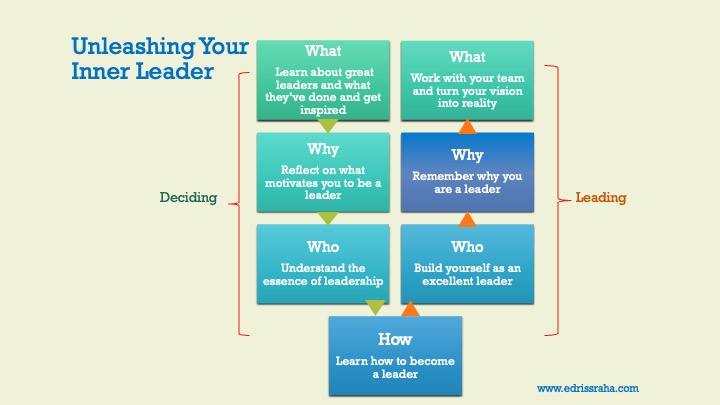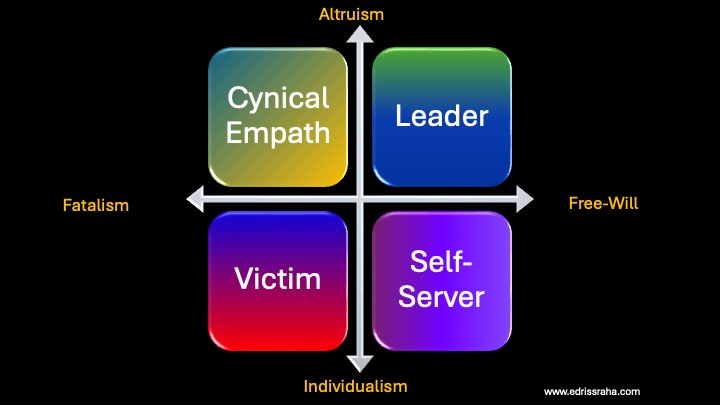
In 1893, a young lawyer, filled with ambition, found himself in the first-class cabin of a train in South Africa, eagerly heading to his first job. He had worked tirelessly for this moment, and the future seemed bright. However, he could not have predicted that this train journey would profoundly transform his life.
As the train rolled on, an angry white man, accompanied by a ticket officer, stormed into the cabin. He demanded to know why a person of color was allowed to occupy a first-class seat. The young lawyer, Mahatma Gandhi, responded calmly, “I have a ticket. It is a first-class ticket.” Undeterred by Gandhi’s dignity, the man shouted, “Who gave you that ticket? You are nothing but colored trash; you don’t belong here.”
Despite Gandhi’s clear assertion of his rights, the two men forcibly removed him from the train, leaving him humiliated on the platform in a land that denied him basic rights based solely on race.
At that moment, Gandhi was confronted with a crucial choice: he could dismiss the encounter and continue a conventional life filled with comfort and professional success, or he could stand against injustice and demand equal treatment. He chose the latter path, embarking on a journey marked by his unwavering commitment to confront racial discrimination—an endeavor that would define his legacy.
Not all leaders emerge from crises, yet they share a universal trait: an innate dissatisfaction with their circumstances and a relentless desire for change.
In your daily life, you may face situations that provoke feelings of dissatisfaction or anger. You might think, “I deserve better; this isn’t fair. Something must change.” You can either ignore these feelings and stick to your routine, or you can assert, “Enough is enough. I must act.”
Perhaps you are an employee in an organization that fails to appreciate your contributions, and you know you have much more to offer. Maybe you dream of launching your own company with innovative products or services that haven’t been explored yet. Or you might feel compelled to act against the current political climate in your country.
No matter your background or circumstances, if you envision a better life, a spark within you is ready to be ignited.

Is Leadership Your Calling? Discover Your Path to Becoming a Leader
Have you ever felt a deep longing for change? A desire to make a difference in the world? If so, you may have the potential to become a leader.
In this article, we will delve into the essence of leadership, the qualities that define exceptional leaders, and how to determine if leadership is your true calling.
Before embarking on the journey of leadership, it is essential to understand the true nature of a leader, the role they play, and the challenges they face. In the following sections, we will explore these aspects in detail.
1. What Leaders Do
The world would be a vastly different place without the influential leaders who have shaped history. Figures like Mahatma Gandhi and Steve Jobs exemplify the power of courageous leadership in both challenging oppression and revolutionizing industries. These individuals, along with countless others, have left an indelible mark on our society.
The Transformative Power of Leadership
Gandhi’s nonviolent resistance was pivotal in liberating India from colonial rule, showcasing the transformative power of peaceful protest. Similarly, Steve Jobs revolutionized technology with innovative products that reshaped how we communicate, work, and entertain.
Beyond these iconic figures, great leaders can be found in various fields. Nelson Mandela, a symbol of resistance against apartheid, united his nation in South Africa. Martin Luther King Jr., a key figure in the American Civil Rights Movement, advocated for racial equality and justice. Peter Drucker, a renowned management consultant, profoundly impacted the business landscape with his insights into management effectiveness and organizational structure.
Leadership Comes in Many Forms
Leaders come in various forms: business owners identifying market needs, social workers dedicated to societal improvement, and politicians committed to serving their communities. Each plays a vital role in shaping our world.
You, too, have the potential to become a great leader. Every exceptional leader starts their journey with a conscious choice to lead. Reflect on your dreams and passions: What excites you? What do you seek to achieve?
Whether you aspire to start a business, transform education, or innovate within your current role, the path to leadership is open to you. Remember, great leaders share common traits: a vision for a better future, a genuine care for people, and a commitment to collaboration.
2. Defining a Leader
Having taught leadership for the past fifteen years and conducted numerous workshops on the subject, I often encounter participants expecting a concrete definition of leadership. Instead, I encourage them to discuss this concept in small groups, allowing them to formulate their own definitions and share their insights with the class. This exercise reveals significant variations in their definitions, highlighting the subjective nature of leadership.
To further emphasize this point, I present 3 to 5 definitions from distinguished leadership experts, illustrating that even among professionals, there is inconsistency in interpretation.
For instance, Stephen Covey views it as the ability to inspire others to follow a vision. Peter Drucker defines a leader simply as someone who has followers. Warren Bennis emphasizes the capacity to translate vision into reality. And Martin Luther King Jr. describes a leader as someone who knows the way, goes the way, and shows the way. These diverse perspectives highlight the multifaceted nature of leadership and the various qualities that can contribute to effective leadership.
Leadership is a practice that can vary greatly among individuals, influenced by their circumstances and environments. In this article, rather than offering a singular definition, I will introduce a framework outlining the essential qualities of a leader.
The Two Layers of Leadership:
To become a leader, one must navigate two essential layers.
First Layer: The Act of Leading
Simply choosing to be a leader does not make you one. Leadership is an active process. Just as a teacher is defined by their role in educating students, a leader is defined by their ability to guide others toward a vision. Here are three core elements that define a leader:
1. Have a Vision
When dissatisfaction with the current situation arises, it often reflects a desire for a better reality—this aspiration is what we call a vision. While some leaders may begin with a vague vision, it serves as a starting point. As they work toward their goals, particularly through collaborative efforts with their teams, their vision becomes increasingly clear.
2. Have Followers
To lead effectively, you must communicate your vision in a clear and compelling manner to inspire others to join you. Gaining followers who share your vision and are willing to assist you in achieving it is crucial. This involves reassuring them that, together, you can navigate the path to success, potentially developing this path collaboratively.
3. Consistently Work Toward Your Vision
Attracting followers and having a vision are just the beginning. A true leader must consistently pursue their vision. If you frequently change your goals or direction without clear justification, you risk being perceived as a dreamer rather than a leader. Consistency is key to maintaining credibility and ensuring progress.
Second Layer: From Good to Great – Becoming an Excellent Leader
The first layer of leadership introduces you to the principles of leadership and qualifies you as a leader. However, to cultivate the qualities that define a great leader and gain recognition from those who trust you and share the journey, you must develop additional essential attributes. This process of growth begins at the outset of your leadership role and continues indefinitely.
While many leadership books highlight various traits of exceptional leaders, we will focus on three fundamental characteristics, grounded in the ancient concept of unifying the heart, mind, and body.
1. Wisdom
“The only true wisdom is in knowing you know nothing.” – Socrates
Wisdom encompasses humility, curiosity, active listening, rational thinking, and the ability to see the bigger picture. A wise leader can think clearly in any situation, considering diverse perspectives and implications. They act with a long-term vision while possessing a deep understanding of others’ needs.
You build wisdom primarily through consistent learning—especially from those around you—practicing rational thinking and making informed decisions.
2. Courage
“Courage is rightly esteemed the first of human qualities because it is the quality which guarantees all others.” – Winston Churchill
Remember, courage is not the absence of fear but the capacity to act despite it. A courageous leader exhibits high emotional intelligence, which enables them to understand their own emotions and those of others while responding wisely. Leaders must learn to take calculated risks, empathize with their team, and provide support during challenging times.
3. Discipline
“Discipline is the bridge between goals and accomplishment.” – Jim Rohn
To achieve any goal, you need discipline. It embodies hard work, perseverance, and the commitment to stay the course even when others might give up. Furthermore, discipline involves maintaining a healthy mind and body to sustain you throughout your leadership journey.
3. Embracing Leadership: A Choice Beyond Victimhood
As human beings, we often find ourselves dissatisfied with certain aspects of our lives or the world around us. This discontent can lead us down different paths. Some choose to become victims of their circumstances, while others embrace the power of leadership.
The victim mentality offers a false sense of ease. By blaming external factors, victims avoid taking responsibility for their lives. This passive approach leads to a cycle of complaints and suffering. Instead of finding fulfillment, victims find themselves trapped in a constant struggle.
However, unlike animals driven by instinct, humans possess the unique ability to make choices. We can envision a better life and take proactive steps to achieve it. This choice marks the beginning of our journey toward leadership.
Leadership is not about being a hero or a visionary. It’s about taking responsibility for your life and making conscious choices. It’s about challenging the status quo and refusing to be a passive observer.
While the path to leadership may be challenging, the rewards are immense. Leaders experience a sense of purpose, fulfillment, and control over their lives. They are able to create positive change for themselves and others.

Four Perspectives on Life
Your perspective on life can place you into one of four categories:
- Victim: Believes that external forces control their life and are powerless to change their circumstances. This mindset fosters complacency, allowing life’s circumstances to dictate your fate, often wishing for luck while remaining paralyzed by your situation.
- Cynical Empath: Cares about others but believes they are powerless to address broader societal issues. While your concern is commendable, your belief in helplessness hinders you from taking action.
- Ambitious Self-Server: Prioritizes personal gain and may exploit others to achieve success. While striving for personal success is understandable, it’s important to consider the impact of your actions on others.
- Leader: Takes responsibility for their life, challenges the status quo, and strives to make a positive impact. Leaders are driven by a desire to create a better world for themselves and others. They are willing to take risks, overcome challenges, and inspire others to follow their example.
Choosing the path of leadership requires courage, determination, and a willingness to step outside of your comfort zone. It’s a choice that can transform your life and the lives of others.
4. How to Be a Leader
As Stephen R. Covey notes in *The 7 Habits of Highly Effective People*, “Start with the End.” The hallmark of effective leadership is having a vision—a dream you are determined to realize. Once you establish your vision, you will find the motivation to undertake the hard work required for its achievement, starting with the transformation of your character.
Step 1: Define Who You Are
Understanding and embracing your identity is crucial to leadership. The first requirement to being a leader is choosing to identify as one. When you acknowledge this, your behavior will align with your leadership aspirations. The clearer your understanding of the kind of leader you want to be, the more quickly you will grow into that role.
While it’s possible to start leading without this foundational step, doing so can lead to haphazard character development and undesirable outcomes. For example, Adolf Hitler had a vision; however, his character was shaped by hatred and ambition, resulting in tragic consequences. In contrast, building a character based on a clear vision ensures that your values serve both you and those around you. This process involves self-awareness, re-evaluating your beliefs, clarifying your values, defining your leadership style, and cultivating healthy habits. A strong character is essential for effective leadership.
Step 2: Foster Relationships
While individual efforts can yield results, extraordinary achievements stem from collaboration. We all need support, recognition, and assistance from others. The ability to influence, build teams, form partnerships, and engage with customers or beneficiaries is vital for success.
The former president of Afghanistan, Ashraf Ghani, exemplifies the pitfalls of neglecting this essential element. Despite having an inspiring vision for Afghanistan that generated hope, he consistently failed to build strong relationships, leading to fragmentation even within his close team.
Step 3: Bring Your Vision to Life
Your journey begins with a vision. When you possess a strong character and solid relationships, working together with your team to achieve that vision becomes a rewarding endeavor rather than an insurmountable challenge. To realize your vision, you’ll need specific qualities, whether inherent to you or found within your team. Together, you will clarify your vision, set clear goals, develop a strategic plan, and diligently work toward achieving your ultimate success.
In essence, your goal is to transform your current reality into the future you envision. Collaborating with your team and partners allows you to construct and execute a winning strategy.
Conclusion
Remember, leadership is not just a title, an official role, or a position bestowed upon you. It is a quality to cultivate within yourself and apply across all aspects of your life.
You have a choice: you can lead your life, actively pursuing your vision and dreams, or you can passively accept the circumstances around you. The journey to becoming a leader starts now; embrace it with courage and purpose.